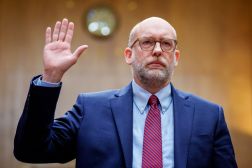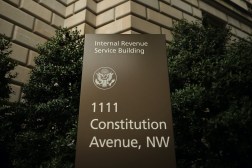More than four months after President Barack Obama signed the Digital Accountability and Transparency Act of 2014 into law, discussion has only just begun on how the administration plans to put the law into practice.
The law, which aims to make the U.S. federal government’s financial expenditures more transparent and open, is jointly administered by the White House’s Office of Management and Budget and the Treasury Department.
Speaking at the Data Transparency Coalition’s Data Transparency 2014 conference, David Mader, OMB’s controller in charge of DATA Act implementation, said the newly signed law is a journey toward a more open government.
“When I think about the DATA Act, I think about a journey,” Mader said. “When I think about the journey and I think about what we’ve accomplished with USAspending, I think we’ve learned an awful lot from putting up that website and with working with the agencies and working with the Congress.”
Mader, the former chief information officer at the Internal Revenue Service, returned to government in May after a stint in the private sector. One of the reasons he said he made the return was to aid in the execution of the DATA Act.
“Back in the late winter, I was contemplating coming back into government service,” Mader said. “One of the motivations for coming to OMB was the ability to be engaged in this initiative.”
USAspending.gov, established in 2006 by the Federal Funding Accountability and Transparency Act, includes information about any contract award granted from a federal agency to any entity. Last week, at the Open Government Partnership meeting at the United Nations in New York, Obama announced that the administration would work on improving USAspending.gov in order to make it more accessible and transparent.
David Lebryk, the fiscal assistant secretary at the Treasury Department, said the DATA Act has the potential to be transformational, but it is not an easy challenge.
“We also know our data resides in a number of places, and our ability to have those systems speak and talk to one another and actually extract meaningful data is not easy,” Lebryk said. “It’s going to take a lot of hard work moving the efforts forward. This really has to be a data-centric effort.”
To guide the rollout of the law, the two agencies have created a joint steering committee and an advisory committee made up of people interested in the initiative. The steering committee will divide the responsibility of the key components of the law among the two agencies in order to define the data elements, determine the source of the data and decide how the data should be published.
“The DATA Act is a broader view of federal spending than has been in the past,” Lebryk said. “When we talk about a 360-degree view of federal spending, it’s about making sure that you understand the distinctions of those three things. How do you do a good job at articulating that and visualizing that?”
During a morning keynote, the White House’s Deputy Chief Technology Officer Nick Sinai said the DATA Act builds on critical efforts for the federal government to provide access to citizens’ government documents online in a safe and secure manner.
Sinai said the guiding focus of the act’s execution should be a relentless focus on the users of data and being iterative and open.
“Data by itself doesn’t do anything,” Sinai said. “It’s the use of data that’s really exciting. At the end of the day, that’s how we’re really going to transform federal spending data.”






